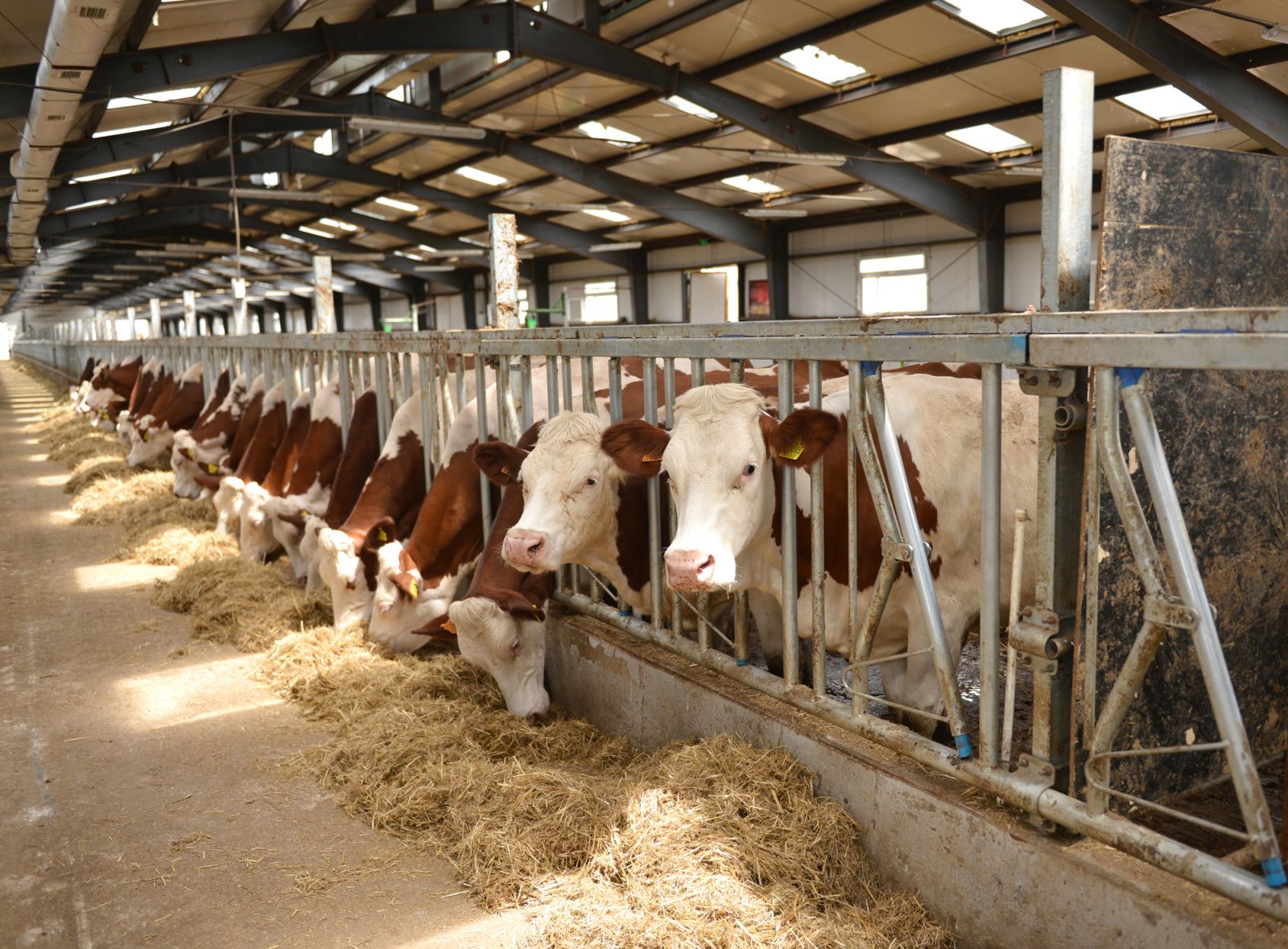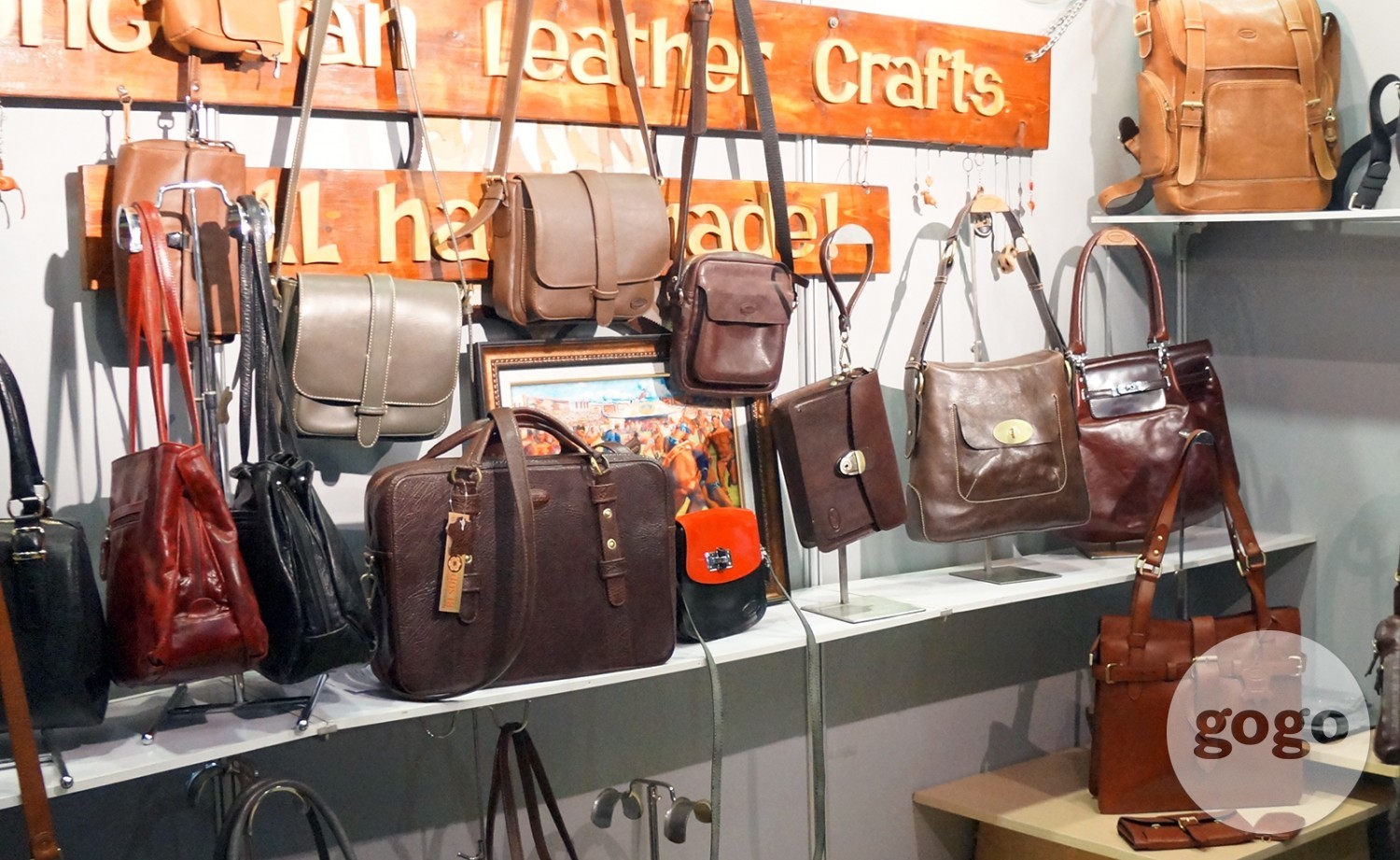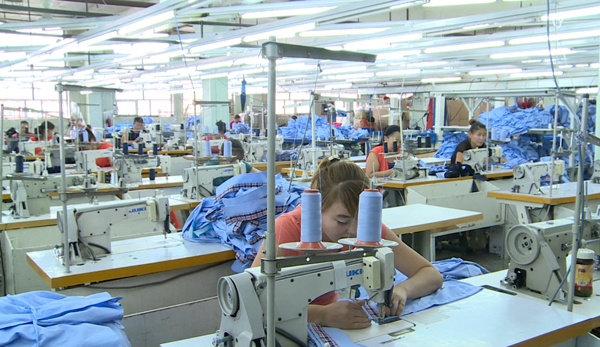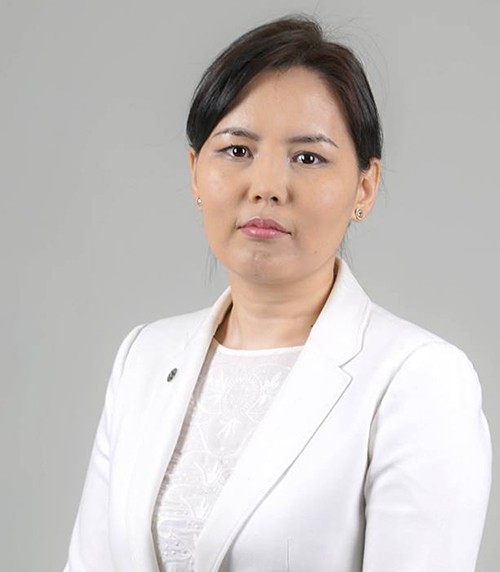EPA between Mongolia and Japan is to start its implementation in two months time. Working group of the EPA is recommending studying the document of over 1000 pages to research on opportunities for the Mongolian entities rising with the implementation. The EPA is waiting the approval by the Japanese Parliament.
Currently Japan is not even in the first five countries list that Mongolia exports to.
Government agencies are studying thoroughly on the impacts of the EPA in their respective sectors. Last few days extensive meetings on the opportunities rising for the agriculture sector of Mongolia have discussed the provisions of the agreement among their professionals.
According to L.Ariunaa, Head of the Cooperation Department at the Ministry of Foreign Affairs and member of the EPA Working Group there are differences in establishing the free trade agreements between the countries, for instance, United States requires to establish agreement on transparency of the laws and regulations first, while in Japan they are more interested in reduced tariffs, increased investments and technical support in order to implement the partnership agreements. In other words, Japan is paying attention to follow up actions as well.
Nevertheless, Mongolia has to commit more into successful implementation of EPA, which was in talks and negotiations for three years. With the start of the EPA implementation the biggest hope for Mongolia is the increase in export amount. While currently Japan is not even in the first five countries list that Mongolia exports to.
Export by country / mil.USDWHAT OPPORTUNITIES DOES AGRICULTURE SECTOR HAVE?
In the 17-chapter agreement with Japan, Mongolia could include the whole chapter on non-tariff barrier to the trade, although the agreement draft was not provisioning this issue. This issue was researched, developed and introduced at the 3rd stage of the negotiations by Mongolian side.
The rationale behind is to test products from Mongolia.
What does this section with 10 provisions cover?
Standard Agencies of the two countries are to cooperate in regards with supporting each other at the regional and international level.
If the products are corresponding to the standards both sides should acknowledge and accept, meaning that no sampling and lab tests conducted.
Moreover, information centers will operate as well.

Non-tariff barrier to the trade is important mostly in the agricultural sector. Although we are cheering that Japanese side is to reduce the tariffs, we have to remember that there is real obstacle of non-tariff barriers, which are commonly knows as high standards and health and safety bans.
Mongolia when entered the WTO was obliged to lower the agricultural import tariff, which is currently set at 5.1 percent known as the most favorable. While in Japan the same number is at 15.5 percent. Which on the contrary means that Japan is good at protecting their internal market. While having the high percentage on the tariffs Japan has set the quota for agricultural sector products coming in from Mongolia. The rationale behind is to test products from Mongolia. In other words, if the Japanese market will be happy then the exports might increase.
This means Mongolian entities have to study the tastes and interests of the Japanese and adhere to their standards.
For instance, let’s take noodles. Japan accepts imports of pastry with 5-20 percent taxes and allowed to import 1 ton per year. Sides have agreed to review the terms in 5 years time (could be after 4 years). During this period Mongolian entities will have better chances to be accepted on the Japanese market if they utilize their technology and adhere to their standards.
As Japan is one of the biggest markets for the ramen noodles it is their way to protect their market.
But Mongolia obtained rights to export lamb and goat meat, semi-processed beef, milk, curd, some pastry, eggs, drinking water, beer, seabuckthorn, vegetables, berries with no customs taxes. As of meat products the sides to review the agreement conditions after five years. Japanese side set the quota for the conserved beef as well while preferred the warm processing. The only product, which is left out of tariff, is the wheat.
WHY THE PRODUCT ORIGIN IS IMPORTANT?
If the manufacturers have decided to export their product they have to prove that it was produced in Mongolia. This is certified with the Certificate of Origin. EPA between Mongolia and Japan provisions 26 sub-chapters on the origin of the product.
There are two main categories of origin in the rules:
Goods wholly obtained or produced in a single country – mineral resources, sea products, cattle, plants and etc.
Goods whose production involved materials from more than one country - if some of the components are manufactured in Mongolia, but components are added for instance from Japan and the product is assembled in Mongolia it may be judged that the product originates from the country where it is assembled. This enables us to enter to the regional product cost network, which is favorable for our industrial sector.
FACING THE NEED TO REDUCE THE IMPORT COSTS
If the imported ingredient of the product is less than 10 percent the product will be considered as product of Mongolia. This eliminates the third party involvement in the trades and benefit from the EPA between Mongolia and Japan.

Transportation criteria
Agreement foresees that during the transit transportation through the territory of PRC the loads would not be opened, therefore securing the original state of the product. This is the way Japan protects their market from the products of PRC. On the other hand, securing the guaranteed quality of the Mongolian products.
Here we have just mentioned some of the common specifics on the product origin provisioned in the EPA, total of 200 pages. Every product has its own regulations. After these regulations manufacturer has to adhere to the standards and health requirements.
NO FOUL PLAY WITH JAPANESE
According to the agreement if Japanese side will have doubts on the origin they have the right to initiate the inspection by request sent to the Mongolian Customs Authorities, who is enabled to conduct the inspection and has the right to inquire the related information. In other words, let’s suppose that Mongolia has exported lamb meat more than it was slaughtered in the given year, Japanese side has all the rights to come into Mongolia and investigate on the case.
While some of the market participants are skeptical on the use of Japanese know-how and use of the Japanese technology referring to the increased costs to the manufacturers.
ONE CAN MAKE A SMALL MISTAKE, BUT…
Due to the lack of the language knowledge Mongolian manufacturers might fill the customs documents wrong. In that case the load would not be transported back, but will be accepted as a minor mistake according to the agreement.
But the intentionally wrong documents will lead to blacklisting.
EXPORTING OF THE GARMENTS PRODUCED WITH IMPORTED MATERIAL AND SEWING MACHINES IS PROHIBITED
Mongolia has sealed a two-staged deal with Japan.
Previous agreements with USA and EU were on-staged. As a result by the end of the agreement term in 2005, all the investors in the textile industry have sold their equipment and exited the market.
 While the new EPA with Japan provisioned the two-stage implementation. It is prohibited to export garments produced using the imported materials and equipment. The EPA provisions the use of the materials made from the yarn made in Mongolia. Only sweaters made with yarns of Mongolian manufacturers will be accepted on Japanese market, which in turn is a great opportunity for Mongolia’s light industry to revamp its capacities, leading to an increase in the employment.
While the new EPA with Japan provisioned the two-stage implementation. It is prohibited to export garments produced using the imported materials and equipment. The EPA provisions the use of the materials made from the yarn made in Mongolia. Only sweaters made with yarns of Mongolian manufacturers will be accepted on Japanese market, which in turn is a great opportunity for Mongolia’s light industry to revamp its capacities, leading to an increase in the employment.
Anyway, the EPA working group is conducting expansive meetings with the market participants on the rising opportunities for Mongolian businesses. They plan on more detailed informative sessions for the seabuckthorn growers and fodder producers and so on. One thing they want is the initiative from the businesses.
While some of the market participants are skeptical on the use of Japanese know-how and use of the Japanese technology referring to the increased costs to the manufacturers. But seeing the increase in the number and amount of the exports to Japan is leaving us with the great hope for the better.
EPA between Mongolia and Japan is to start its implementation in two months time. Working group of the EPA is recommending studying the document of over 1000 pages to research on opportunities for the Mongolian entities rising with the implementation. The EPA is waiting the approval by the Japanese Parliament.
Currently Japan is not even in the first five countries list that Mongolia exports to.
Government agencies are studying thoroughly on the impacts of the EPA in their respective sectors. Last few days extensive meetings on the opportunities rising for the agriculture sector of Mongolia have discussed the provisions of the agreement among their professionals.
According to L.Ariunaa, Head of the Cooperation Department at the Ministry of Foreign Affairs and member of the EPA Working Group there are differences in establishing the free trade agreements between the countries, for instance, United States requires to establish agreement on transparency of the laws and regulations first, while in Japan they are more interested in reduced tariffs, increased investments and technical support in order to implement the partnership agreements. In other words, Japan is paying attention to follow up actions as well.
Nevertheless, Mongolia has to commit more into successful implementation of EPA, which was in talks and negotiations for three years. With the start of the EPA implementation the biggest hope for Mongolia is the increase in export amount. While currently Japan is not even in the first five countries list that Mongolia exports to.
Export by country / mil.USDWHAT OPPORTUNITIES DOES AGRICULTURE SECTOR HAVE?
In the 17-chapter agreement with Japan, Mongolia could include the whole chapter on non-tariff barrier to the trade, although the agreement draft was not provisioning this issue. This issue was researched, developed and introduced at the 3rd stage of the negotiations by Mongolian side.
The rationale behind is to test products from Mongolia.
What does this section with 10 provisions cover?
Standard Agencies of the two countries are to cooperate in regards with supporting each other at the regional and international level.
If the products are corresponding to the standards both sides should acknowledge and accept, meaning that no sampling and lab tests conducted.
Moreover, information centers will operate as well.

Non-tariff barrier to the trade is important mostly in the agricultural sector. Although we are cheering that Japanese side is to reduce the tariffs, we have to remember that there is real obstacle of non-tariff barriers, which are commonly knows as high standards and health and safety bans.
Mongolia when entered the WTO was obliged to lower the agricultural import tariff, which is currently set at 5.1 percent known as the most favorable. While in Japan the same number is at 15.5 percent. Which on the contrary means that Japan is good at protecting their internal market. While having the high percentage on the tariffs Japan has set the quota for agricultural sector products coming in from Mongolia. The rationale behind is to test products from Mongolia. In other words, if the Japanese market will be happy then the exports might increase.
This means Mongolian entities have to study the tastes and interests of the Japanese and adhere to their standards.
For instance, let’s take noodles. Japan accepts imports of pastry with 5-20 percent taxes and allowed to import 1 ton per year. Sides have agreed to review the terms in 5 years time (could be after 4 years). During this period Mongolian entities will have better chances to be accepted on the Japanese market if they utilize their technology and adhere to their standards.
As Japan is one of the biggest markets for the ramen noodles it is their way to protect their market.
But Mongolia obtained rights to export lamb and goat meat, semi-processed beef, milk, curd, some pastry, eggs, drinking water, beer, seabuckthorn, vegetables, berries with no customs taxes. As of meat products the sides to review the agreement conditions after five years. Japanese side set the quota for the conserved beef as well while preferred the warm processing. The only product, which is left out of tariff, is the wheat.
WHY THE PRODUCT ORIGIN IS IMPORTANT?
If the manufacturers have decided to export their product they have to prove that it was produced in Mongolia. This is certified with the Certificate of Origin. EPA between Mongolia and Japan provisions 26 sub-chapters on the origin of the product.
There are two main categories of origin in the rules:
Goods wholly obtained or produced in a single country – mineral resources, sea products, cattle, plants and etc.
Goods whose production involved materials from more than one country - if some of the components are manufactured in Mongolia, but components are added for instance from Japan and the product is assembled in Mongolia it may be judged that the product originates from the country where it is assembled. This enables us to enter to the regional product cost network, which is favorable for our industrial sector.
FACING THE NEED TO REDUCE THE IMPORT COSTS
If the imported ingredient of the product is less than 10 percent the product will be considered as product of Mongolia. This eliminates the third party involvement in the trades and benefit from the EPA between Mongolia and Japan.

Transportation criteria
Agreement foresees that during the transit transportation through the territory of PRC the loads would not be opened, therefore securing the original state of the product. This is the way Japan protects their market from the products of PRC. On the other hand, securing the guaranteed quality of the Mongolian products.
Here we have just mentioned some of the common specifics on the product origin provisioned in the EPA, total of 200 pages. Every product has its own regulations. After these regulations manufacturer has to adhere to the standards and health requirements.
NO FOUL PLAY WITH JAPANESE
According to the agreement if Japanese side will have doubts on the origin they have the right to initiate the inspection by request sent to the Mongolian Customs Authorities, who is enabled to conduct the inspection and has the right to inquire the related information. In other words, let’s suppose that Mongolia has exported lamb meat more than it was slaughtered in the given year, Japanese side has all the rights to come into Mongolia and investigate on the case.
While some of the market participants are skeptical on the use of Japanese know-how and use of the Japanese technology referring to the increased costs to the manufacturers.
ONE CAN MAKE A SMALL MISTAKE, BUT…
Due to the lack of the language knowledge Mongolian manufacturers might fill the customs documents wrong. In that case the load would not be transported back, but will be accepted as a minor mistake according to the agreement.
But the intentionally wrong documents will lead to blacklisting.
EXPORTING OF THE GARMENTS PRODUCED WITH IMPORTED MATERIAL AND SEWING MACHINES IS PROHIBITED
Mongolia has sealed a two-staged deal with Japan.
Previous agreements with USA and EU were on-staged. As a result by the end of the agreement term in 2005, all the investors in the textile industry have sold their equipment and exited the market.
 While the new EPA with Japan provisioned the two-stage implementation. It is prohibited to export garments produced using the imported materials and equipment. The EPA provisions the use of the materials made from the yarn made in Mongolia. Only sweaters made with yarns of Mongolian manufacturers will be accepted on Japanese market, which in turn is a great opportunity for Mongolia’s light industry to revamp its capacities, leading to an increase in the employment.
While the new EPA with Japan provisioned the two-stage implementation. It is prohibited to export garments produced using the imported materials and equipment. The EPA provisions the use of the materials made from the yarn made in Mongolia. Only sweaters made with yarns of Mongolian manufacturers will be accepted on Japanese market, which in turn is a great opportunity for Mongolia’s light industry to revamp its capacities, leading to an increase in the employment.
Anyway, the EPA working group is conducting expansive meetings with the market participants on the rising opportunities for Mongolian businesses. They plan on more detailed informative sessions for the seabuckthorn growers and fodder producers and so on. One thing they want is the initiative from the businesses.
While some of the market participants are skeptical on the use of Japanese know-how and use of the Japanese technology referring to the increased costs to the manufacturers. But seeing the increase in the number and amount of the exports to Japan is leaving us with the great hope for the better.



